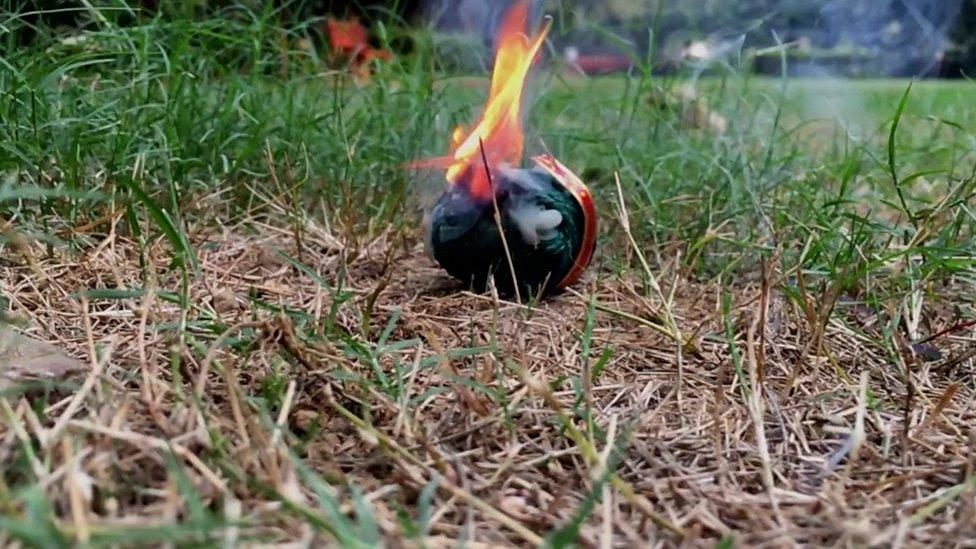India's Diwali fireworks: Nazis and fighting elephants
- Published
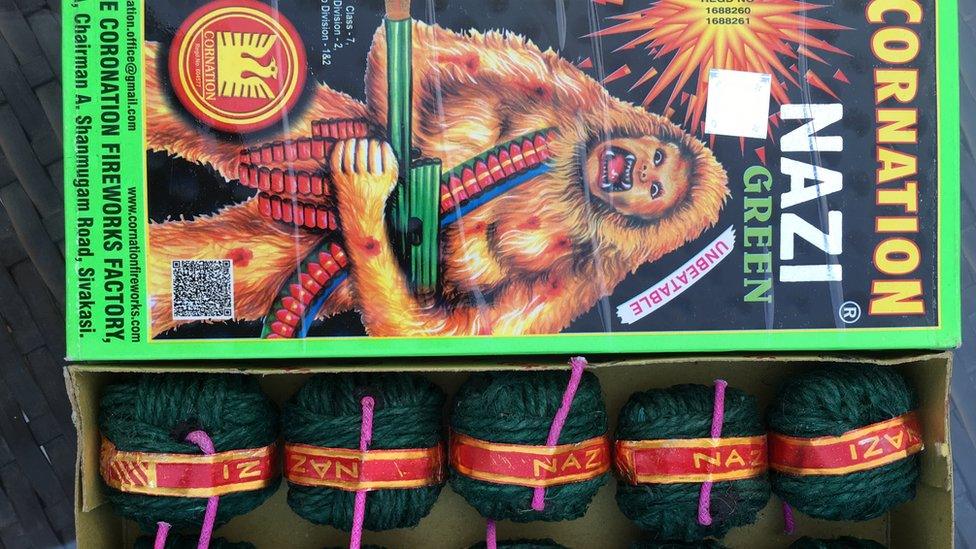
The Green Nazi - "a psychedelic, pop-art nightmare"
Diwali is famous as the festival of lights, but it is also a festival of fireworks.
Every evening the streets ring with explosions and there is a thrilling whiff of sulphur in the smoggy air.
I'll be honest, I've always loved fireworks, and India has a great tradition of pyrotechnics, boasting some of the most bizarre firework brands in the world.
Meet the Green Nazi, just one of the Coronation Firework Factory's extensive arsenal of unusual munitions.
The box is like some psychedelic, pop-art nightmare, featuring a monster that could have been modelled on Chewbacca, pocked with bullet wounds and wielding a huge green machine gun.
Quite what the image has to do with Nazis, or for that matter greenery, is not clear. But I'll tell you what, they make a very loud bang.
In fact the Green Nazi is more like military ordnance than what in Britain we quaintly call a "banger".
You can feel the blast wave through your clothes.
Coronation is so proud of its creation that it appears to have registered the name "Nazi" as a trademark.
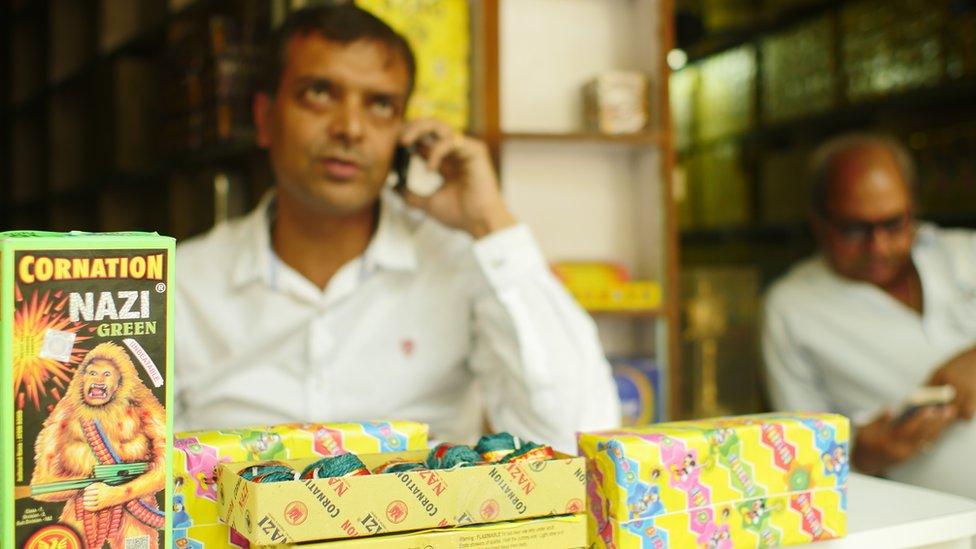
Nazi and Hitler-themed products are not uncommon in India
Justin Rowlatt reports from Delhi: Fireworks make the pollution "worse"
It also advertises its ethical credentials on the box: "Every child is our customer, no child is our worker," it boasts on the blurb.
And Coronation is not alone in recognising the marketing muscle of imagery from the Third Reich when it comes to selling fireworks.
The Standard Firework Company sells a roman candle called a "Hitler" complete with an image of the Fuhrer in mid salute.
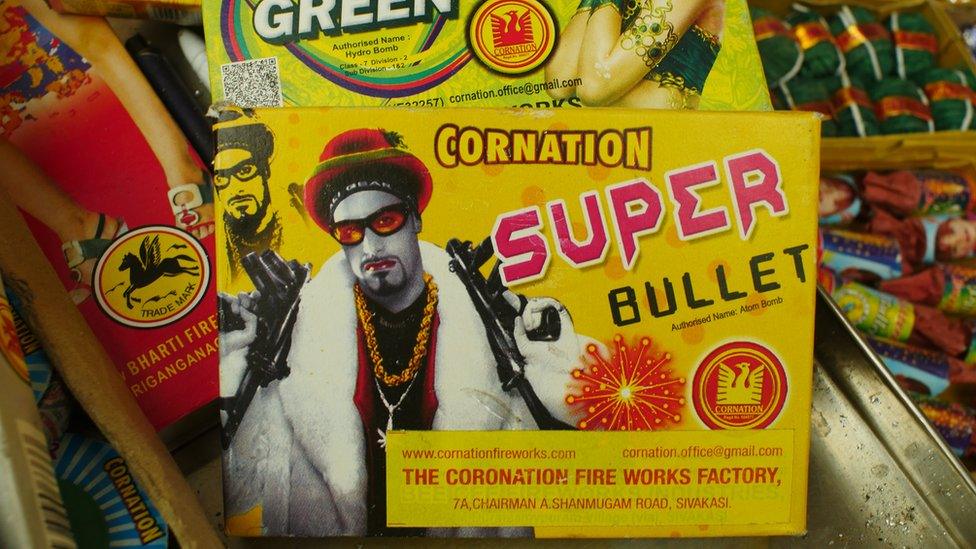
Sacha Baron Cohen's fictional character Ali G appears to have inspired the "super bullet"
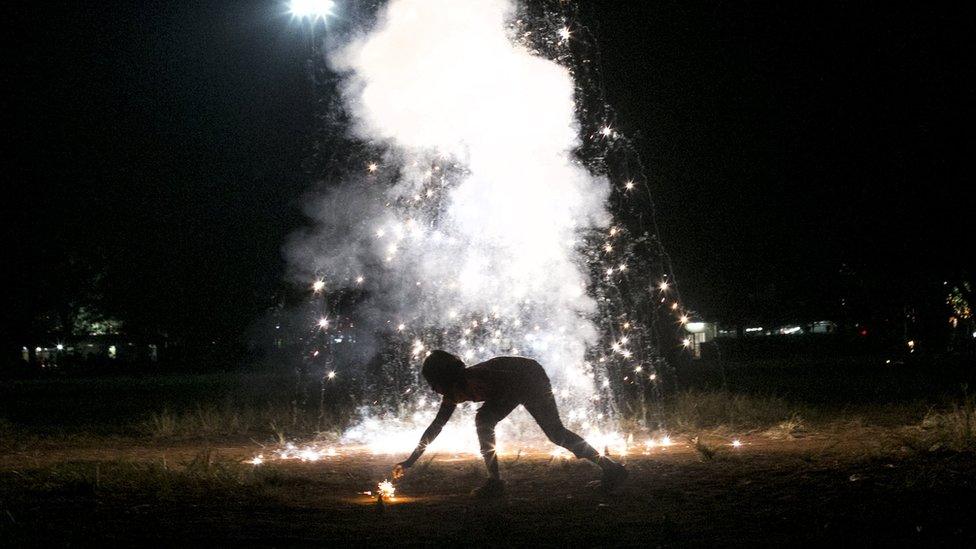
Fireworks light up India during Diwali celebrations
But the extravagant names and bizarre imagery don't stop there.
A lot of fireworks use images of children to advertise their wares.
The Mini Bullet has a boy with a Kalashnikov on the front. More shocking is the Anil Atom Bomb, with its shocked little girl. The company's Mother Baby Cracker brand suggests it believes that fireworks can provide fun for all the family.

This product was "made without child labour", according to the company
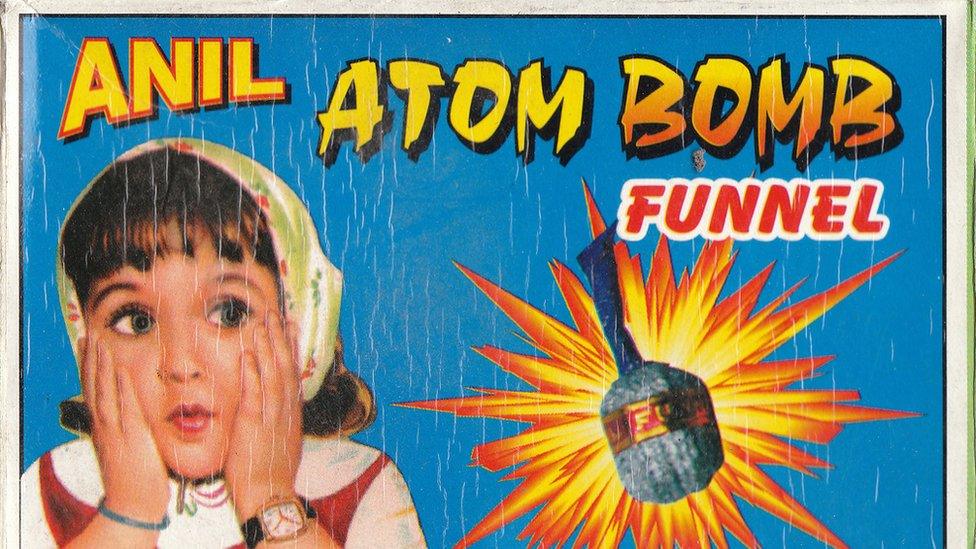
Indian-made fireworks are mostly produced in the southern state of Tamil Nadu
Powerful animals are another theme.
My favourite is Elephant Fight Duluxe, from Sri Meenambal Fireworks, but the 10,000 shot Jumbo Tusker comes an impressive second place.
Or how about enlivening firework night with a Green Drizzling Serpent?

But manufacturers say up to 40% of fireworks are now imported from China
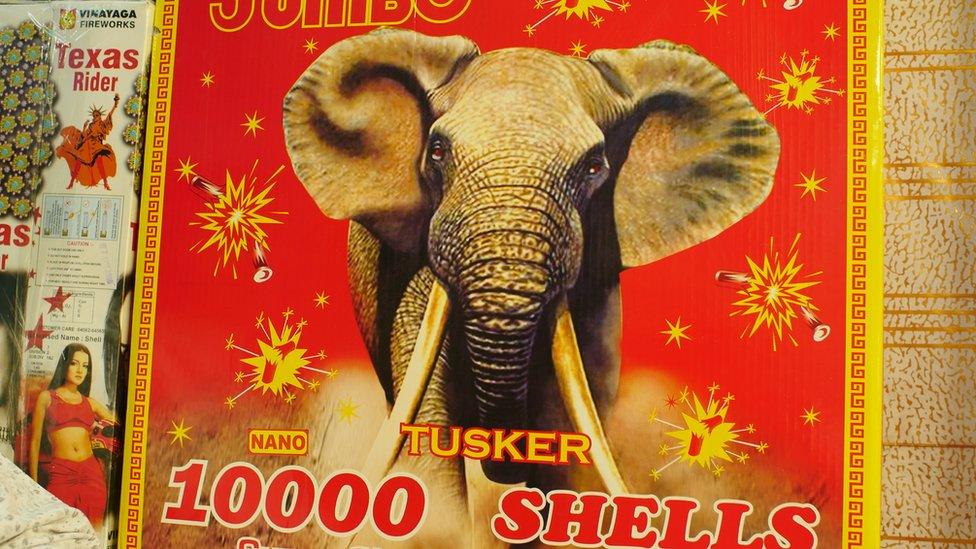
Indians are expected to spend $450m on fireworks this year, mostly during Diwali
But India pays a high price for its love of pyrotechnics. Pollution levels on Monday morning were literally off the scale.
My little air quality monitor - an essential for any Delhi resident - gave an Air Quality Index (AQI) reading of 500, as high as it goes. And that was inside my house.
When I switched it over to record the most dangerous form of pollution, the tiny micro-particles known as PM2.5, it was even more worrying.
In the room where two of my children were having breakfast it was 999 micrograms per cubic metre.
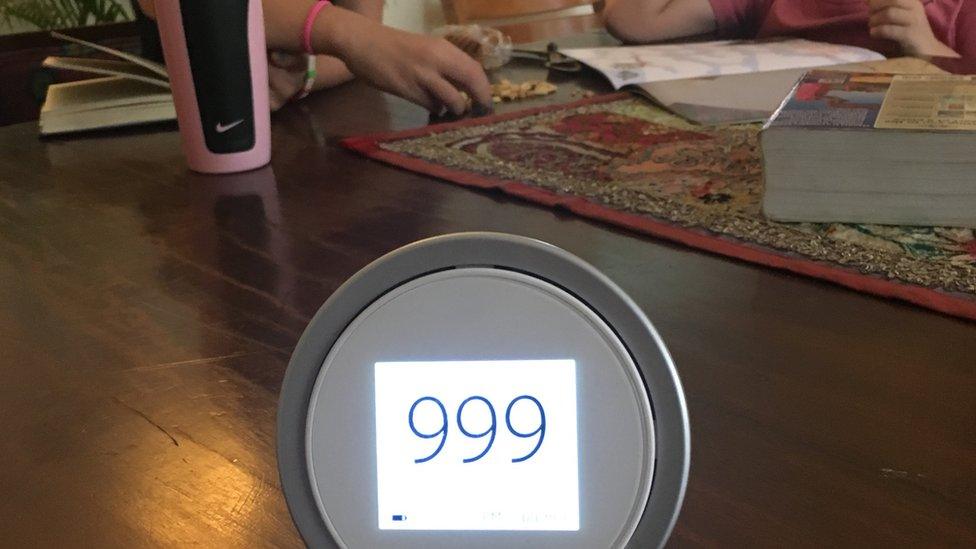
Dangerously high levels of pollution were detected in the home of BBC correspondent Justin Rowlatt
The World Health Organization recommends that the annual average should be no more than 10 micrograms per cubic metre. Over a 24-hour period, the average should not exceed 25 micrograms per cubic metre.
It is no surprise then that there has been a recent major effort by national and state governments to discourage the tradition of Diwali fireworks.
Unfortunately, previous similar initiatives have done little to stop the Diwali cannonades.
So we Delhi-wallahs won't have a respite any time soon.
- Published31 October 2016
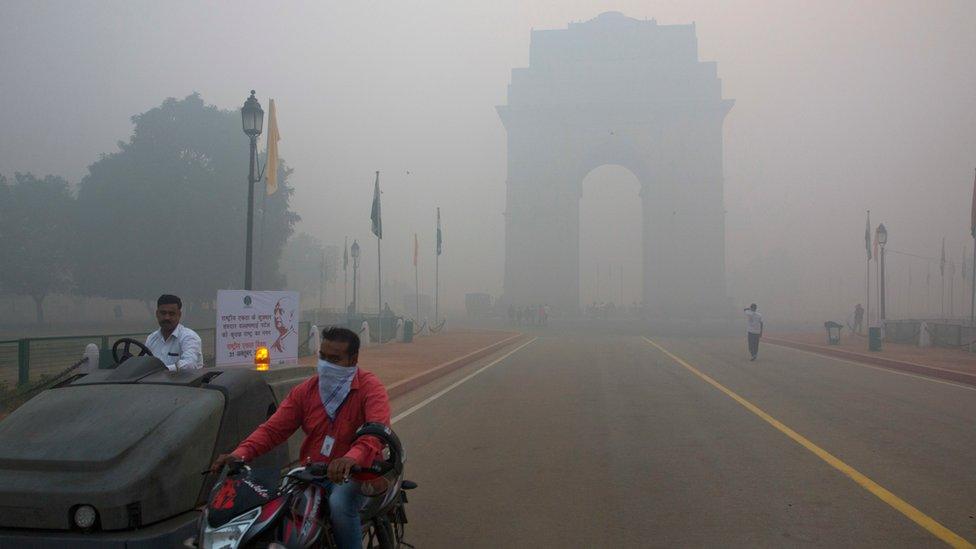
- Published31 October 2016
